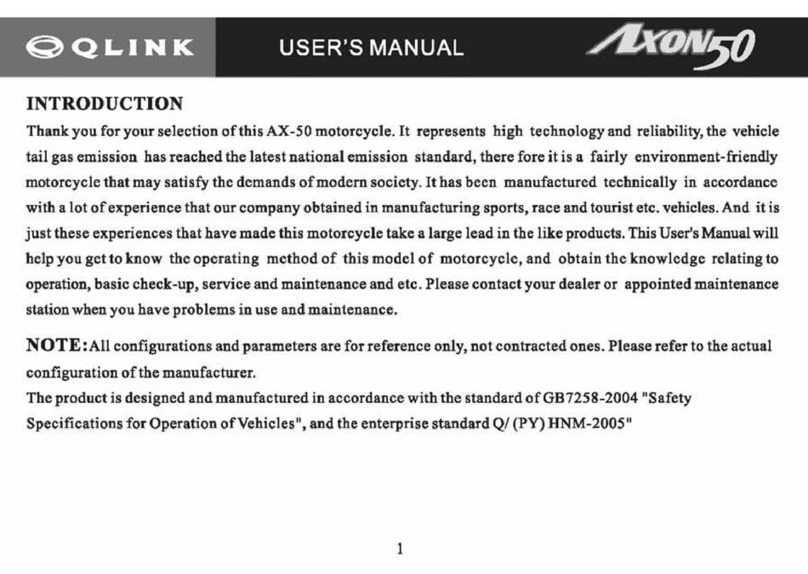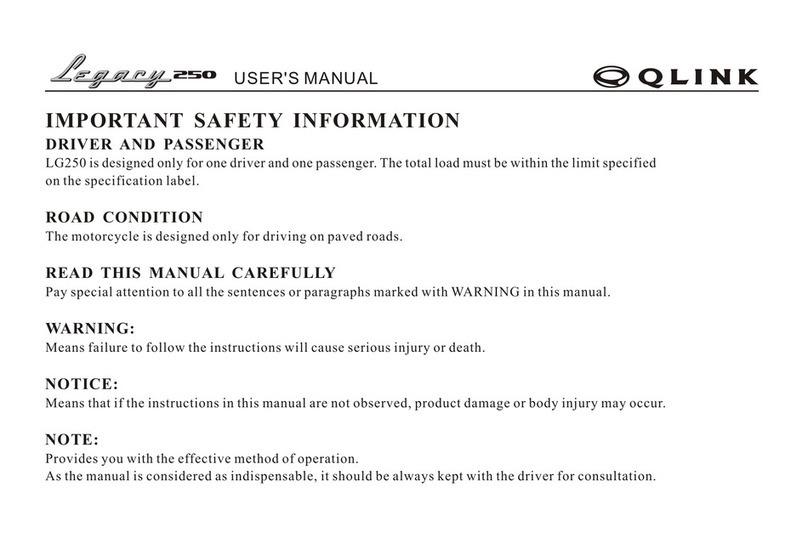Safety Precautions for Riders
It isa great pleasure to ride a motorcycle. For the sake of your safety, please observe the traffic rules and
regulations, and fivestipulations listed below strictly.
ToWearSafety Helmet
Safely riding a motorcycle starts from the proper wearing of helmet, which is very important for a rider. A
high-quality safety helmet is the firstprotective tool to a rider because most serious accidentis the injuring
of head. Soplease put on your safety helmetwith appropriate protective glass on ridingyour motorcycle.
ToGet Familiar with the Structure
Yourriding skill and knowledge of themachinery structure constitutea basis of safe operation. Make adequate
practice at a traffic-free area. Keep in mindthat practice makesperfect.
ToKnow Your Speed Limit
Riding speed variesaccording to theroad conditions, yourriding skill andthe weather. Awarenessof your safety
speed limit mayhelp avoid accidents. At any time only ride within yoursafety speed limit.
ToWearSuitable Clothes
Loose and outlandish clothes can make you uncomfortable andunsafe. Riding onthe road withsuitable clothes
makes your feet and hands move freely. Gloves, boots and the necessary safety helmet show that you are a
qualified rider. For the sake of safety, high quality and fit clothes are recommended.
Doubled Attention in Rainy Days
Special caution should beexercised in theriding of yourmotorcycle in rainytime. Bear inmind that the braking
distance in rainy days is twice as that in sunny days. Keep away from covers,paintsand greasy dirt on the road
to prevent slipping. Never turn sharply during speeding up. Be careful to pass through railways and bridges etc.,
and keep sufficient distance from the vehicle ahead.
USER'S MANUAL
Precautions and General Information
1





























